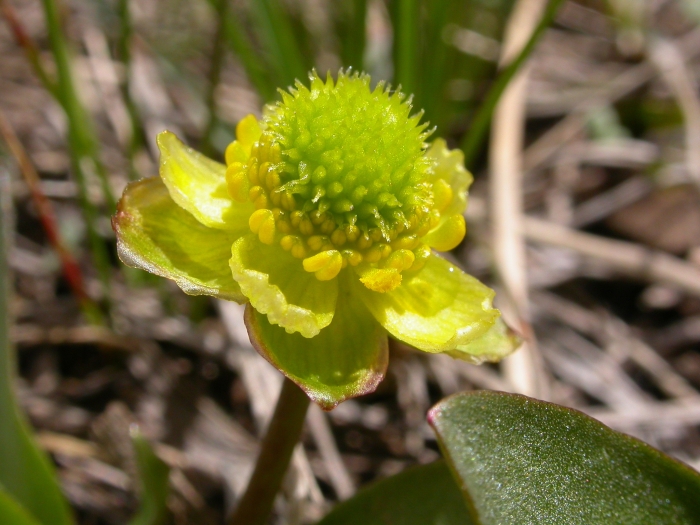Sagebrush Buttercup
(Ranunculus glaberrimus)
Sagebrush Buttercup (Ranunculus glaberrimus)
/
/

Matt Lavin
CC BY 4.0
Image By:
Matt Lavin
Recorded By:
Copyright:
CC BY 4.0
Copyright Notice:
Photo by: Matt Lavin | License Type: CC BY 4.0 | License URL: http://creativecommons.org/licenses/by/4.0/ | Rights Holder: Matt Lavin | Publisher: iNaturalist | Date Created: 2008-05-14T14:43:44-07:00 |
























Estimated Native Range
Summary
Ranunculus glaberrimus, commonly known as Sagebrush Buttercup, is a herbaceous perennial native to the sagebrush steppe ecosystems, grasslands, and wet meadows of interior western North America, including western Canada, the western United States, and the northwestern Great Plains. It typically grows 2-6 inches tall and is characterized by its glossy, thick basal leaves and bright yellow flowers, which usually have five petals (rarely up to 10) and bloom early in the spring. The flowers are quite showy and attract early-season pollinators. Sagebrush Buttercup is adapted to a range of conditions within its native habitat but often prefers seasonally moist areas.
This species is valued for its early blooming period and can be used in native plant gardens, rock gardens, or as part of a wildflower meadow. It requires minimal maintenance once established and thrives in full sun to part shade, with moist, well-drained soils. While it is toxic to livestock and potentially to humans if ingested, it is not commonly browsed due to its toxicity, which can be a benefit in areas with grazing pressure. Sagebrush Buttercup is not known for being particularly problematic in cultivation, but care should be taken to prevent accidental ingestion by children or pets.CC BY-SA 4.0
This species is valued for its early blooming period and can be used in native plant gardens, rock gardens, or as part of a wildflower meadow. It requires minimal maintenance once established and thrives in full sun to part shade, with moist, well-drained soils. While it is toxic to livestock and potentially to humans if ingested, it is not commonly browsed due to its toxicity, which can be a benefit in areas with grazing pressure. Sagebrush Buttercup is not known for being particularly problematic in cultivation, but care should be taken to prevent accidental ingestion by children or pets.CC BY-SA 4.0
Plant Description
- Plant Type: Herb
- Height: 0.25-0.5 feet
- Width: 0.25-0.75 feet
- Growth Rate: Moderate
- Flower Color: Yellow
- Flowering Season: Spring, Summer
- Leaf Retention: Deciduous
Growth Requirements
- Sun: Full Sun, Part Shade
- Water: Medium
- Drainage: Medium
Common Uses
Bee Garden, Low Maintenance, Water Garden
Natural Habitat
Native to sagebrush steppe ecosystems, grasslands, and wet meadows
Other Names
Common Names: Smooth Buttercup, Shiny-Leaved Buttercup, Glabrous Buttercup
Scientific Names: , Ranunculus glaberrimus, Beckwithia austinae, Ranunculus austinae, Ranunculus cusickii, Ranunculus glaberrimus var. typicus,
GBIF Accepted Name: